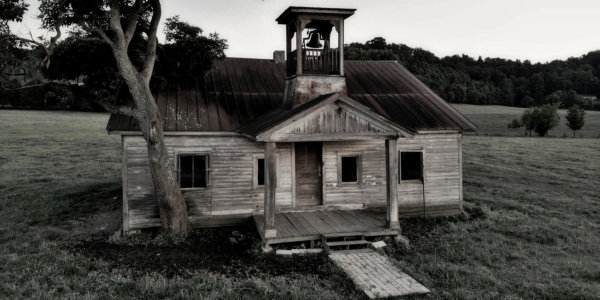Prologue to “Stories From My Prairie Childhood” – Why I’m Here
From retirement on I began to receive and amass a considerable amount of family memorabilia. In 2017 I had become totally overwhelmed by the mountain of disorganized information and didn’t know where to begin. Then I discovered Learning in Retirement at Carlton University. Courses on writing memoirs were available and I jumped at the chance that I might be able to climb that mountain. I’ve been scaling it ever since, at times still overwhelmed, but determined to at least reach the age of 20 on this wondrous and revealing trip into the past. I am assisted by what I learned on the courses and by the informal group that has persisted since my first class with our excellent instructor, Dr. Anna Rumin.
The series “Stories From My Prairie Childhood” focuses on a period that span years of depression and WW ll from the perspective of a pre-teen with two exceptions – “Tough Love” (still to be published) and “Rubella or Rubeola?” (where I was at the ages of 13 and 14). The stories are relatively ordered but may dissolve into disorder from time to time. Memories are like that.
The first story in this series is 1. The Pasture.
3. Rosebush – 1941 to 2019
Rosebush, a small unpainted, clapboard, one room school, provided me with seven years of early education, the foundation of my future learning. Its location so near to our farm put us at a distinct advantage to most of our classmates – especially throughout the winter months.
Many years before, Dad had attended Rosebush until he had finished Grade Eight. If children then wanted secondary education their parents needed enough money to board them in Humboldt. Most families could not afford that.
I don’t know how the school got its name. However it was appropriate. In summer the roadside ditches in our community were rimmed with the fragrant blossoms of wild roses.
At Rosebush, along with 30 or more other preteens and teens, I expected to work my way through Grade One to Grade Eight. Older teens were permitted to sit in the back desks where they could study on their own using correspondence courses to guide them. This was a step up from having no access to secondary education at all. For all grades – one to eight – all subjects were taught by one plumpish, discipline minded teacher. However my family moved to Melfort before I got to do my Grade Eight at Rosebush.
Rosebush had a library in the form of a two-tier cupboard, the top part of which had glass doors. It would be a collector’s item now. Its meagre collection included books dated back to the mid 1800s. That the collection remained so limited was no doubt due to the times. In 1941 our province was just beginning to recover from rock bottom prices for grain aggravated by the effects of a prolonged depression followed by Canada’s involvement in the WW II.
The most imposing feature of the room was the teacher’s desk – the centre of all power – containing as it did the register, a marking book and The Strap. Every prairie school came equipped with a strap. A small bell set to one side, was effective for commanding attention or ringing out the signal for recess or lunch hour. It also timed tests.
Mrs. Potter conducted reading sessions and various kinds of drills in a space close to her desk. She sat. We stood. One such routine involved pointing a yardstick between two students and posing a mathematical problem. Mental Arithmetic. Whoever got the right answer first, moved up the line. I had a facility for reading and math so I often made it to the “podium”. No medals though and I would have preferred being lauded for athletics. I might win reading or math races but never running races. Today we encourage students to better their own performance and not worry about the performance of a classmate. Easier said than done. Competition persists in athletics and in life in general and the discussion re participation versus competition goes on. Athletics of the “everyone has to try” approach humiliated me on more than one occasion. It was only as an adult that I overcame the effects of this supposedly democratic practice and turned to badminton, skating, swimming and cycling. Finding your “groove” can be challenging.
To commit spelling mistakes persistently was punishable by strappings that were just as persistent. One hit per error. No one had heard of psychological problems or learning disabilities back then. At least I didn’t get strapped when I ran last, or when once again I failed to catch a ball or tripped over my own feet in the compulsory try-outs for field events.
In the centre of the room – near the back was a huge pot-bellied stove. Our teacher could have developed a rotational seating plan – an innovation that might have dealt with the problem of being “half-done” and would have required students to take turns in the “well-done” , medium, and rare circles of heat that radiated from this blimp sized cauldron of heat. The story of the stove is not complete without mentioning its odor-enhancing powers – as wet non-too-clean boots and clothes dried out near it, producing a very rich academic atmosphere, a “sensory experience” to remember.






Ed Janzen6 years ago
Thank you Louise Falconer for “Rosebush”.
I taught in a one room 8-grade school like that
Between Dauphin and Winnipegosis in northern Manitoba.
The room did not come equipped with a strap.
Hence I never used a strap for 4 years 1951 to 1955.
You have detailed memories.
I should try some of mine.
Check Story Quilt next time.
Ed Janzen, editor
The Story Quilt Team6 years ago
Here it is: https://www.story-quilt.com/nordheim-disappointments/